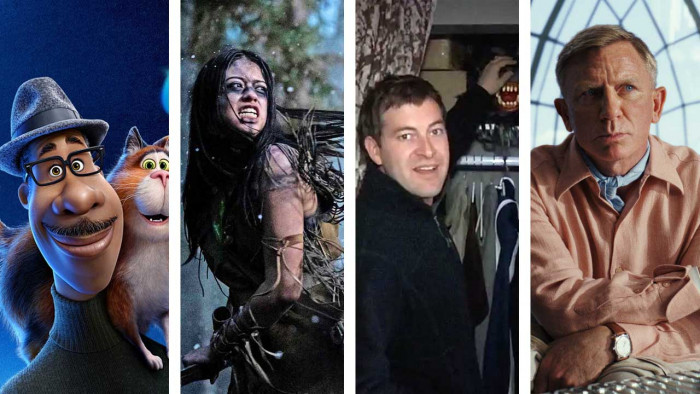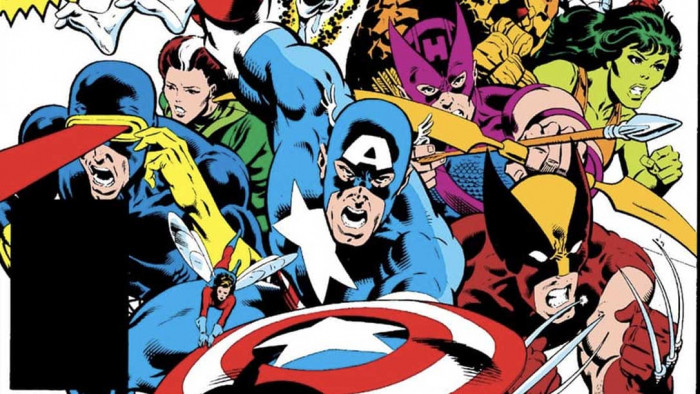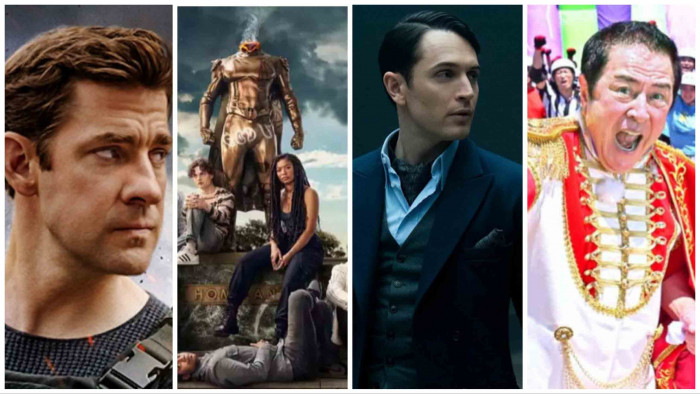Are corporate executives just a missile silo away from supervillain status? Novelist Alan Glynn looks at the enduring legacy of the boardroom bad guy
It is in the natural order of things that CEOs should be uninteresting. It’s their job to be this way. They’re hired to run companies, generate positive quarterly reports and increase shareholder profit. They wear suits and are usually middle-aged, white, balding and often overweight. They play golf. It’s an image that’s been around since at least the Fifties, and it fits, because CEOs are managers, beancounters, fumblers in a greasy till – albeit a till writ so large that it now almost fills the entire planet.
But how is it, then, that in books and films, these grey ‘organisation’ men can make such convincing and compelling bad guys? Because when we think of the classic villains of page and screen, the first thing that jumps out at us is a distinguishing physical feature – from Richard III’s hunchback to Ernst Stavro Blofeld’s hideous facial scar. The second thing is a force of personality, the dark magnetism of these characters, their need to manipulate and control.
Conan Doyle’s Moriarty, for instance, had “hereditary tendencies of the most diabolical kind… rendered infinitely more dangerous by his extraordinary mental powers”. Serial killer Hannibal Lecter is cultured and charming, but his commanding presence and intellectual prowess are suffocating and malignant. Then come the lurid appetites and proclivities. Even the word: ordinary people have hobbies; villains have proclivities. Murder, paedophilia, cannibalism.
How can the humble man in the grey flannel suit compete with this?
If conformity is a watchword of the corporate world, then green hair isn’t going to fly, is it? Ditto steel hands or tear ducts that leak blood. And there won’t be much call for strangling, stabbing or filching nuclear warheads. Sat poring over a spreadsheet, or on the fairway with a nine iron, the average CEO doesn’t seem likely to start getting medieval on your ass.
And yet, and yet…
Psycho in a suit
Recent books by Jon Ronson (The Psychopath Test) and Kevin Dutton (The Wisdom Of Psychopaths) have shown that this average CEO is four times more likely to be a psychopath than the average working schmoe on his payroll. And the CEO doesn’t have to be an axe murderer to qualify. He just needs certain characteristics.
First, a cheap, superficial charm that draws people in. Next, calculated and manipulative behaviour – lying without hesitation, setting colleagues against one another. And most crucially, a complete lack of human empathy.
This person doesn’t have feelings – no compassion, no remorse, no guilt, nada. Of course, not all CEOs are like this – it’s only a small percentage, and most of the ones who are can hide it. The agreed figure is four per cent, which is disappointing. You’d like it to be higher. But still, get 25 of these guys in a room and you’re guaranteed at least one triple-A psycho.
But this is a long way from the Fifties, when a lot of academic navel- gazing was conducted about US business. Social critics felt the spirit of capitalism was being bureaucratised, that the rugged individuals of a previous generation were no longer calling the shots, handing control to the new “managerial class”.
Writers such as David Riesman (The Lonely Crowd) and, in fiction, Sloan Wilson (The Man In The Gray Flannel Suit) described how the creeping contagion of conformity in the corporate system was choking individuality and innovation.
The pattern was set for at least the next two decades, with an iconic representation of this stifling culture in the offices of Consolidated Life Of New York in Billy Wilder’s 1960 classic The Apartment. Things hadn’t improved by the mid-Seventies, when Joseph Heller came along with his second novel, Something Happened, and anxious insurance executive Bob Slocum.
By the next decade, something had happened. For so long, the conservative CEOs of the US had done their best to stay in the shadows, like venerable Mafia dons. But in the Eighties, a new generation of corporate leaders took over, men who emerged, John Gotti-like, into the sunlight of celebrity.
Lee Iacocca at Chrysler and Jack Welch at GE weren’t just perceived – and, crucially, didn’t just perceive themselves – as business leaders. National leaders was closer to the mark; national saviours, even.
The other big shift? The bloated corpulence of middle management was hacked away and a new mantra was defined: maximise the company’s stock price. At any price.
Chainsaw economics
So, hello, Michael Douglas’s Gordon Gekko. Hello, Danny DeVito’s Larry The Liquidator. Hello, the real world’s Albert J Dunlap, ‘Chainsaw Al’ (pictured right) – the man who canned 11,000 employees at Scott Paper, eliminated philanthropy, cut R&D, significantly boosted the company’s stock price and found time to pose for a photo brandishing an automatic weapon and sporting an ammunition belt. Hello, too, Tyco’s Dennis Kozlowski and Enron’s dynamic duo, Jeff Skilling and Kenneth ‘Kenny Boy’ Lay. The rest – or, the past 12 years – is history. And what happened in those 12 years is pretty astonishing.
The thing is, CEOs have always been employees (picture Blofeld negotiating a remuneration package), but it has only been in recent times that managerial compensation has been tied to, and been determined by, managerial performance. This has shifted the dynamic and detached the CEO from any kind of meaningful loyalty.
In other words, these guys make prodigious amounts of money – on average more than 100 times that of the average worker – and they are driven by that monolithic force: the stock price. Hopped up on the metrics of the expectations market, they maraud over the globalised landscape like Mongol warlords, making decisions that affect the lives of millions.
So today’s top-tier CEO is a world away from the conformist company man of the Eisenhower era. Still largely male, white, middle-aged and balding (overweight may have ceded to vegan), he is nevertheless a peculiarly modern creature – a wealthy, socialised psychopath with immense power. And if he isn’t a psychopath – if he doesn’t tick enough boxes on the official Hare Psychopathy Checklist – Joel Bakan, author of The Corporation, would argue that he works for one, in the undeniably psychopathic (though constitutionally protected) “person” of the corporation itself.
It seems an interesting tension now exists between the perceived greyness of the CEO and the extraordinary extent of his influence – a rich seam to mine for any writer or filmmaker. In my own novels, I have been drawn to how CEOs can end up in knots trying to rationalise immoral behaviour, and how they can buckle under the strain and be destroyed by their power.
And that’s the key: power. The best bad guys in literature and cinema possess varying degrees of the stuff – be they kings, generals, tycoons, presidents or criminals. Today, it’s the turn of the CEO. He may not wear an eye patch or operate from a secret lair, he may not have an army (though private security firms do come in handy). He doesn’t need any of these things, because never before has there been such a powerful figure – one who can move across the globe without restriction, who can extract natural resources, exploit labour, evade taxes and regulations. One who can exert an influence over society that is greater and subtler than that of any elected or appointed official, or even of any badass military tyrant.
So don’t be fooled by the suit. That sober-looking man in the corner office is rich, powerful and probably a psycho. He’s the new bogeyman and he’s coming to get you…
Graveland by Alan Glynn is out now
(Images: PA, Rex)
Latest
Related Reviews and Shortlists










